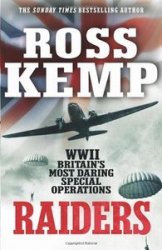CAPE Spear, projecting out into the Atlantic at St. John’s, Newfoundland, is the eastern tip of the North American continent. From there to the Queen Charlotte Islands on the north-western rim of British Columbia comprehends 80° of longitude, almost a quarter of the way round the earth. From the top of Ellesmere Island, at 83°N, where land ends and the mountains drop into the Arctic Ocean, to Point Pelee in Lake Erie at 42°N, is half the same distance. Canada’s a big country. How we got that much of the earth’s surface, put it together politically, continue to hold it (more or less), is in itself, without our quite realizing it, a major achievement.
In 1840 the total population of British North America—as present-day Canada was then called—was about 1.5 million, dispersed across seven colonies. Newfoundland had a population of 60,000, concentrated in the eastern, lobster-like Avalon peninsula, between Cape Pine in the south and Cape Bonavista in the north— the latter Cartier’s North American landfall in 1534. Roughly, the populations of the other colonies were: Nova Scotia, 130,000; New Brunswick, 100,000; Prince Edward Island, 45,000; Lower Canada (Quebec), 650,000; and Upper Canada (Ontario),
450,000. (These last two colonies—“the Canadas”—were joined by a British law of 1841 into the Province of Canada.) West and north of Lake Superior was the chartered territory of the Hudson’s Bay Company, the watershed of all the rivers flowing into Hudson Bay. Across the Rockies the hbc (“Here before Christ”) had exclusive licence to trade in an area then called Oregon and New Caledonia, jointly occupied with the Americans, from 42 “N, the border of Mexican California, on the south to where the coast met 54°40’, the beginning of Russian Alaska. The total Native populations—-east, west, and Arctic—would perhaps have been under 300,000.
The Arctic Qcean and its islands were one of the first major areas of Canada to be explored, as names such as Davis Strait and Frobisher Bay—honouring the sixteenth-century explorers Martin Frobisher and John Davis—suggest. About a 1,600 kilometres (1000 miles) of the northern Arctic coast was surveyed in 1825-27 by Lieutenant John Franklin of the British navy, east and west from the mouth of the Mackenzie River. In 1845 he set out on his expedition to find the Northwest Passage. He never returned. He died aboard H. M.S. Erebus, imprisoned in the ice west of King
William Island, in 1847. At the time, no one knew what had happened to him. Expeditions to find him and his men began in 1848 and continued until 1859, when written records were found. Then, in 1984, the first startling discovery of two frozen and remarkably well preserved bodies of crewmen was made.
The Arctic was and is fierce, majestic country, where survival depended upon adaptation, resourcefulness, courage, and luck (good or bad as the case might be). Native people, both north and south, had adapted marvellously to the demands of the Canadian environment over a period of several thousand years. It was necessary for the new white arrivals to do the same.


Sir John Franklin's Last Expedition, 1845-48. Franklin set out in 1845 to sail through the Northwest Passage. He never returned. Francis McClintock’s Arctic expedition of 1857-59 discovered two skeletons, two guns, and a lifeboat at Point Victory on King William’s Island, Watercolour (undated) by unknown artist.
In 1984 the body of Petty Officer lohn Torrington was found on Beechey Island, N. W.T., in an almost perfect state of preservation. Torrington was on Franklin’s last expedition, and died in spring 1846. (The bindings were probably to fit him into the narrow coffin, and to prevent the grotesqueness of his jaw falling open.)




 World History
World History









